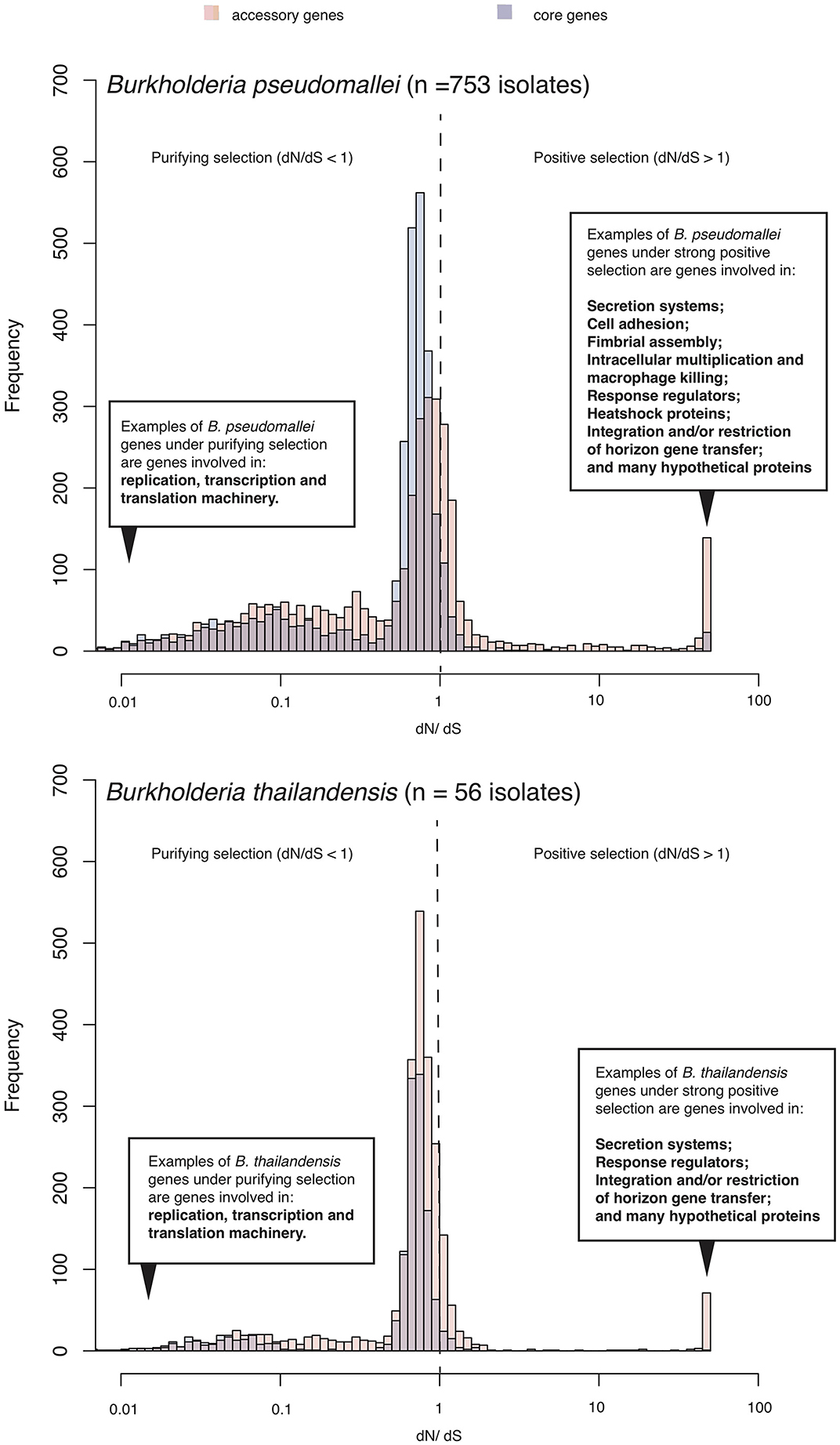- 1Mahidol-Oxford Tropical Medicine Research Unit (MORU), Bangkok, Thailand
- 2Bioinformatics and Systems Biology Program, School of Bioresource and Technology, King Mongkut's University of Technology Thonburi, Bangkok, Thailand
- 3Wellcome Sanger Institute, Hinxton, United Kingdom
A Corrigendum on
An Evolutionary Arms Race Between Burkholderia pseudomallei and Host Immune System: What Do We Know?
by Chomkatekaew, C., Boonklang, P., Sangphukieo, A., and Chewapreecha, C. (2020). Front. Microbiol. 11:612568. doi: 10.3389/fmicb.2020.612568
In the original article, there was a mistake in Figure 1 as published. The annotation of core and accessory genes in the Figure 1 was misplaced. The corrected figure appears below.

Figure 1. Selection pressure acting on B. pseudomallei population. The histogram summarizes ranges of dN/dS calculated from predicted coding sequences from a collection of diverse B. pseudomallei population from northeast Thailand (Chewapreecha et al., 2019), and B. thailandensis genomes from the public database. B. pseudomallei and B. thailandensis have highly plastic genomes comprising of at least two chromosomes of ~7–8 Mb in size when combined. Using a pan-genome approach, all coding sequences could be categorized as “core” (present in all genomes) or “accessory” (variably present across studied genomes). Accessory genes display an elevated level of dN/dS which is signatures of positive selection or more relaxed purifying selection.
The authors apologize for this error and state that this does not change the scientific conclusions of the article in any way. The original article has been updated.
Publisher's Note
All claims expressed in this article are solely those of the authors and do not necessarily represent those of their affiliated organizations, or those of the publisher, the editors and the reviewers. Any product that may be evaluated in this article, or claim that may be made by its manufacturer, is not guaranteed or endorsed by the publisher.
Keywords: melioidosis, evolution, burkholderia, host immune system, genetic variants
Citation: Chomkatekaew C, Boonklang P, Sangphukieo A and Chewapreecha C (2021) Corrigendum: An Evolutionary Arms Race Between Burkholderia pseudomallei and Host Immune System: What Do We Know? Front. Microbiol. 12:801975. doi: 10.3389/fmicb.2021.801975
Received: 26 October 2021; Accepted: 29 October 2021;
Published: 22 November 2021.
Approved by:
Frontiers Editorial Office, Frontiers Media SA, SwitzerlandCopyright © 2021 Chomkatekaew, Boonklang, Sangphukieo and Chewapreecha. This is an open-access article distributed under the terms of the Creative Commons Attribution License (CC BY). The use, distribution or reproduction in other forums is permitted, provided the original author(s) and the copyright owner(s) are credited and that the original publication in this journal is cited, in accordance with accepted academic practice. No use, distribution or reproduction is permitted which does not comply with these terms.
*Correspondence: Claire Chewapreecha, Y2xhaXJlQHRyb3BtZWRyZXMuYWM=
†These authors have contributed equally to this work
 Chalita Chomkatekaew1†
Chalita Chomkatekaew1† Claire Chewapreecha
Claire Chewapreecha